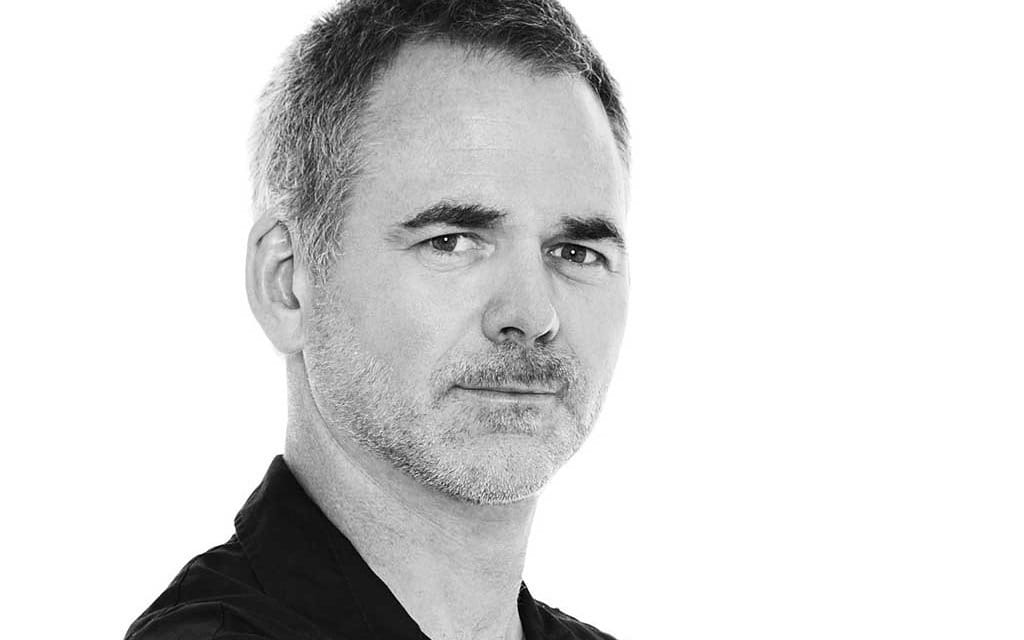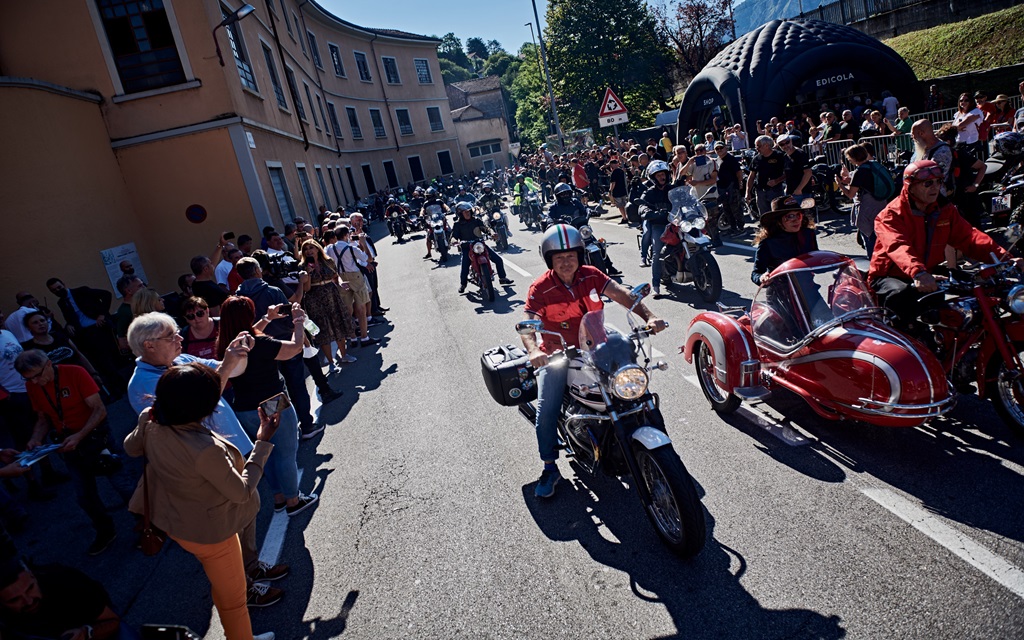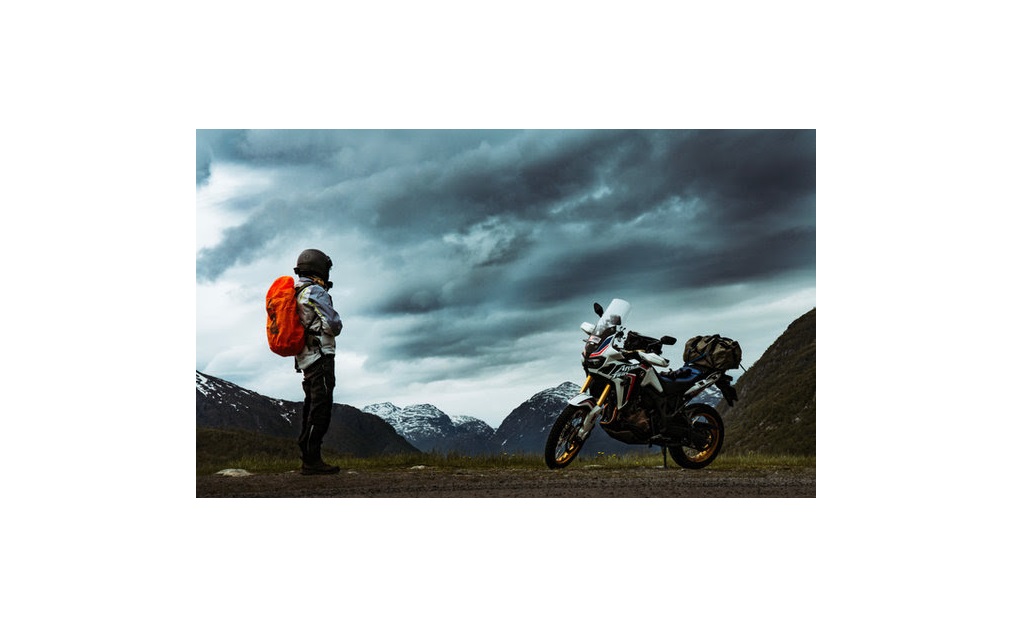I had the best of intentions. I’d dropped my daughter at school and was marching straight home to my computer to write this editorial. I didn’t yet have a topic to write about. But I didn’t worry. Deadlines — like a gun pressed to the temple — motivate a man. I had the key in the front door lock when I heard it. A nice low burble — a twin, obviously, but not a cruiser engine. It had a sporting note to the exhaust, and my guess was either the narrow angle V-twin of a KTM or a Rotax-engined Aprilia. I waited. The bike passed. Bingo! A KTM Adventure 950 with an Arrow exhaust.
Ten minutes later, with a long espresso at my side and a flashing cursor ahead, I was settled in and ready to write. But I couldn’t stop thinking of that KTM. The new Adventure is better in every quantifiable way. But it’s the old one that speaks to me. I can’t draw. I can’t even sketch convincing stick figures — and yet the original Adventure looks like it could have been built by me with tools no more extravagant than a nail gun, a sheet of drywall, and a roll of tape. The sophistication of modern manufacturing facilitates the production of bodywork with complex, sensuous curves. But in the old days KTM just made dirt bikes, so they covered the mechanical bits with sheets of plastic and then nipped out for schnitzel.
With the late spring sun still on the rise the day was young when I made the equivalent to an alcoholic’s visit to the liquor cabinet: I went online. Just for a moment, to determine the KTM’s year of manufacture. I even looked at the clock and gave myself a time limit: to the bottom of the hour — 14 minutes, tops.
Two and a half hours later I’d learned everything there was to know about the 950 and 990 Adventures. I learned of upgrades (the seat!), of weaknesses, and of parts interchangeability. I read evenhanded appraisals from owners who had travelled hundreds of thousands of kilometres (what do these people do — or not do — that allows them to ride so much?) alongside the nonsensical nattering of idiots who knew little and who came across as knowing even less. And then something odd happened. I grew tired of the bike.
That’s right. I had ownership fatigue without having actually owned the bike. I had been charmed by stories of arduous trips, upset by tearful confessions of honest owners done wrong by devious dealers, and had my heart swell far beyond its natural size by one story wherein a rider limped into a dealership at closing on a Saturday with an ailing machine. The technicians could have (probably should have) nipped out the back door, but no, they marched the machine to a hoist and stripped it down to its skivvies. A cylinder head was removed, a burnt valve was replaced, and the rider was dispatched into the night on a healthy machine. I nearly wept.
Having owned-without-actually-owning a first generation KTM Adventure, I wondered what was next. And then I spotted it, far in the background of a picture of a group of KTMs at a rally. I zoomed in and there it was: my next bike, a Cagiva Elefant. Cagiva, back in the ’90s, was the house brand of the swashbuckling Castiglioni brothers, who also owned Ducati. The Elefant, I noted, satisfied two of my ownership prerequisites: it’s obscure, like a Hodaka Combat Wombat, my first motorcycle; and parts availability is nil. (The Cagiva brand is currently “dormant” according to Giovanni Castiglioni, boss of MV Agusta and son of deceased Cagiva owner Claudio.) The Elefant has genuine off-road credentials, as it’s won the Paris-Dakar rally twice. Powering the Elefant is Ducati’s charming two-valve, air-cooled engine. Of course the suspension is bound to be knackered and by the time the bugs are sorted out to the point where the bike is halfway reliable I’d likely have more invested than if I’d just bought a good used KTM — or a brand new KTM. I’ll have to think this over.
And then, just before dinner (I skipped lunch, too busy to eat), I inadvertently clicked on a photograph of Greg Williams’s Triumph bobber that I had stored on my desktop. What a stunning bike. Then I typed “Triumph chopper” into Google images and up popped dozens of tasty Triumphs, from gritty rat bikes to slick show bikes. It was then I determined that it would be more prudent to build a bike without suspension than to spend thousands attending to the needs of the fork and shock on an obsolete Cagiva. But Triumph ownership would be far from inexpensive. To convincingly own the bike I’d have to enter the lifestyle as depicted in the photographs online. I’d need a mid-’50s pickup painted flat black to haul the bike to meets in addition to jet black hair slicked to the moon. And then I lost another hour researching the perfect Gretsch guitar to go with my chopper and my pickup and my covered-with-tattoos 27-year-old girlfriend. And then there was the issue of how safely to inform my current girlfriend of my decisions.
Over poached eggs at midnight I considered my options. I was without the funds for the KTM, the stomach for the Cagiva, or the backbone for a rigid-framed Triumph. “Why not just finish the half- assembled bike in the garage,” I said half-aloud, my mind softly glowing from the brilliance of a decision fully considered and deftly reasoned.






